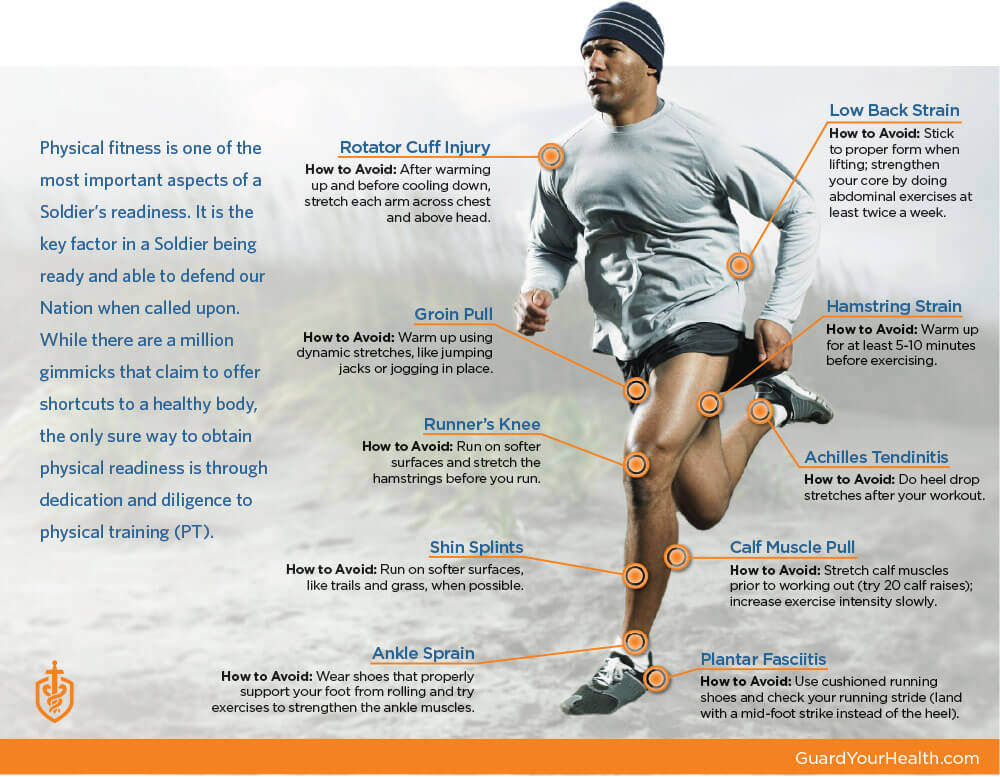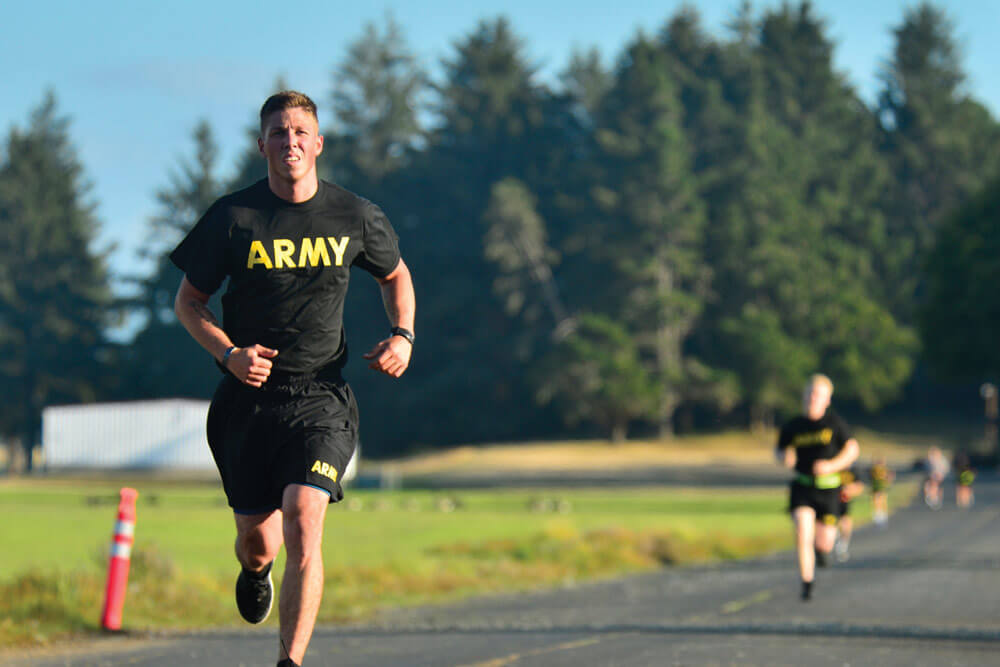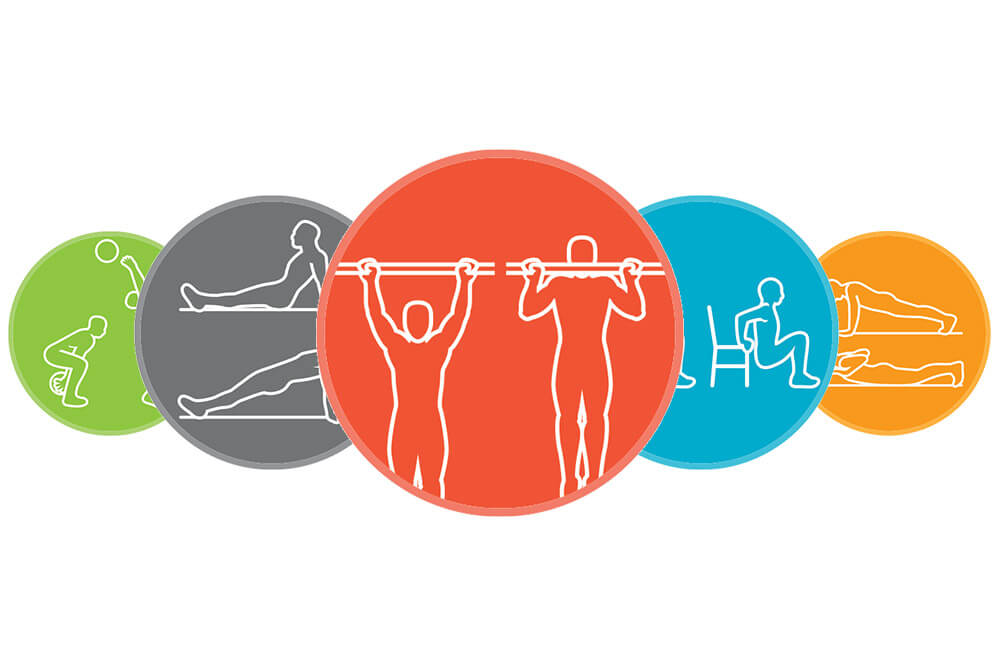When doing regular PT, temporary strain is almost inevitable, even at a minor level. Unfortunately, significant injuries resulting from improper exercise techniques are also a common occurrence in PT. The following are 10 common PT injuries and the steps you can take to avoid them.
1. SHIN SPLINT
What Is It? Shin splints are caused by inflammation, or swelling, due to injury of the soft tissues in the lower leg. They cause a sharp pain along the shin and are most often caused by overtraining.
How to Avoid It? Adjust your running routine. If you are a runner, try occasionally running on softer surfaces, such as a natural trail or field (not on pavement or a treadmill). Also, replace your running shoes every 300-400 miles and allow for plenty of recovery time before, during and after workouts.
2. CALF MUSCLE PULL
What Is It? Calf muscle pulls occur when the calf muscle begins to tear away from the Achilles tendon. This type of injury is caused by performing high-intensity workouts, such as running or biking too frequently.
How to Avoid It? Avoid raising your exercise intensity by more than 10 percent each week. For example, if you bike for 30 minutes the first week, the next week you should increase your time to about 33 minutes, the week after should be 36 minutes, and so on. Invest in athletic shoes with cushioned insoles to help reduce calf muscle stress. Also, allow extra time to warm up before beginning any exercise.
3. LOW BACK STRAIN
What Is It? This injury occurs when the back muscles are stretched too far, which can cause small tears in the tissue and possibly affect the spinal cord.
How to Avoid It? Make a habit of doing hamstring stretches after every workout to prevent your back muscles from tightening. Always maintain good posture and proper form during exercise and incorporate into your fitness routine exercises that strengthen your core, such as planks and sit-ups.
4. PLANTAR FASCIITIS
What Is It? A plantar fasciitis injury causes irritation to the plantar fascia ligament, which runs along the bottom of the foot. It is one of the most common causes of heel pain and typically feels like a stabbing pain in the bottom of the foot near the heel. The most common cause of plantar fasciitis is an overload of physical activity or exercise.
How to Avoid It? Choose shoes that are well-fitted and provide sufficient cushioning and support for the heel, arch and ball of the foot. The cushioning and support will help to distribute weight evenly throughout the foot. Also, check your running form, as this type of injury can be caused by over-striding (heavy heel-striking).
5. HAMSTRING STRAIN
What Is It? A hamstring strain results from one or more of the muscles located in the back of the thigh being stretched too far.
How to Avoid It? Establish an effective warm-up routine before exercising. This will help loosen the muscles in your legs and prepare them for your workout.
6. ACHILLES TENDINITIS
What Is It? This injury happens when the large tendon, located in the back of the ankle, is inflamed. Achilles tendinitis most commonly develops when training intensity is increased at a rapid pace. Those who do not stretch as part of their physical training are also likely to suffer from Achilles tendinitis.
How to Avoid It? Increase your exercise levels in small increments to gradually build up intensity. Also remember to do dynamic stretches (stretches which require motion) before your workout and static stretches (stretches without movement of the joints) after your workout.
7. ROTATOR CUFF INJURY
What Is It? A rotator cuff injury can range in stages from basic inflammation to a complete tear around the shoulder joint. While most rotator cuffs tear over time, they can also tear suddenly.
How to Avoid It? Stretch your arms after you warm up and after every workout session. This will help strengthen the shoulder joint muscle and reduce the chances of injury.
8. GROIN PULL
What Is It? A groin pull is caused by putting too much stress on muscles located in the groin and inner thigh. Not warming up enough and extreme overuse of inner thigh and groin muscles while performing squat exercises can result in groin pulls.
How to Avoid It? Warm up before each workout and properly stretch after any squatting exercise that involves this muscle group.
9. ANKLE SPRAIN
What Is It? An ankle sprain (or twisted ankle) happens when ligaments around the ankle are stretched beyond a normal range of motion, causing microscopic tears in the ligament.
How to Avoid It? Provide adequate support for your ankle by wearing shoes that fit well and are not too worn. Also, include exercises that strengthen the ankle muscles, such as standing calf raises, in your workout routine.
10. RUNNER’S KNEE
What Is It? This injury occurs when stress from running causes irritation in the area where the kneecap rests on the thighbone. Pain can be sharp or dull and may cause cracking, popping or grinding sensations. A sensation of tenderness or feeling like the knee is giving out is also common.
How to Avoid It? Run on softer surfaces and stretch your hamstrings before running.
Although these 10 injuries are all different, there is a common theme when it comes to prevention. Many of these injuries can be avoided by following proper warm-up and cool-down techniques, allowing for plenty of rest between workouts, avoiding overuse or overtraining, wearing the proper gear and remembering to hydrate before, during and after exercising. Water lubricates your joints, which also will help to prevent injury.
Submitted by GuardYourHealth.com



